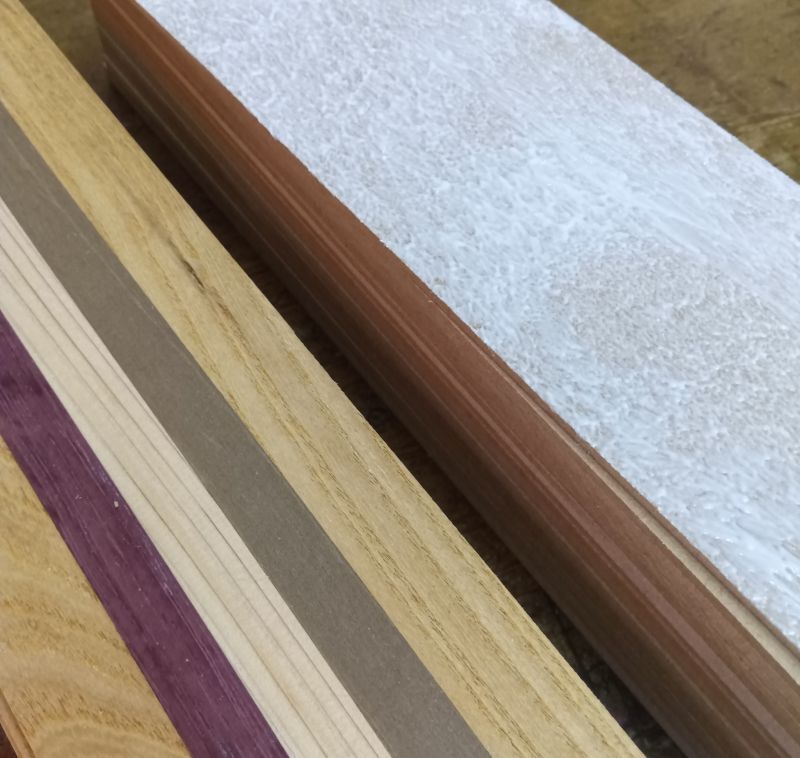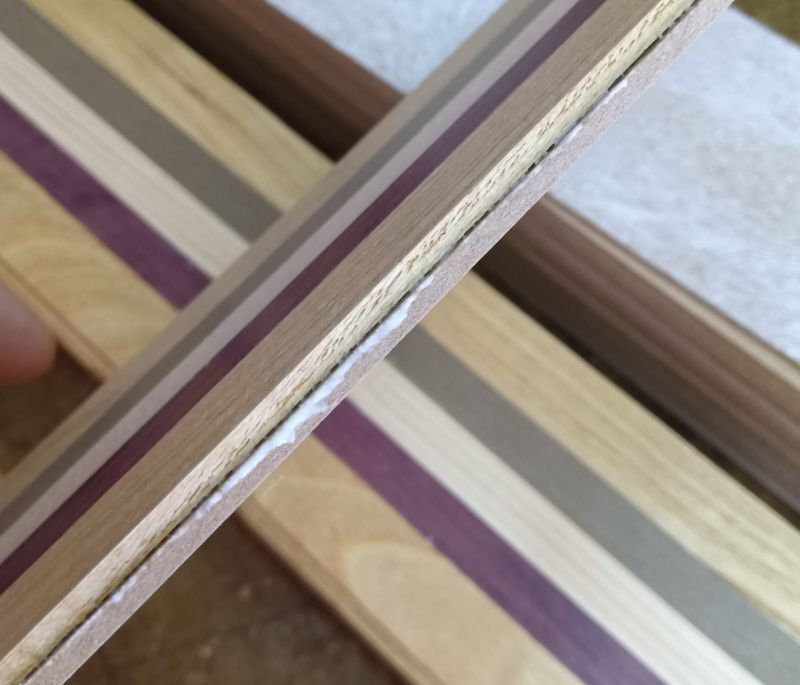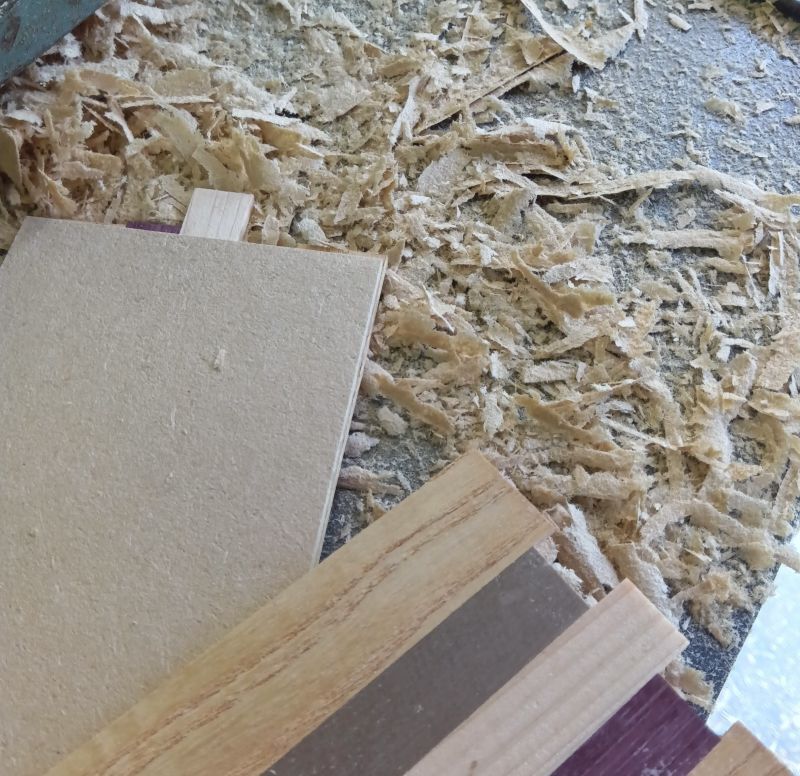The panels of natural wood
I am currently working on the lid panel for a 4-sun 27-step Japanese puzzle box, which I wrote about recently. The lid panel is made from solid wood, but because it’s a 27-move mechanism, both the top and bottom panels move. Therefore, the panel is not fixed in place but is simply fitted into the grooves of the mechanism.
Therefore, this time, I decided to attach an MDF board to the back of the panel to increase its strength. The top and bottom panels are 3.5 mm thick, so I made the ratio of solid wood 2.5mm and MDF board 1 mm (total = 3.5mm). The thinnest type of MDF board available in Japan is 2.5 mm. When combined with the solid wood, the total thickness becomes 5 mm. So, after attaching the MDF board to the solid wood, I will shave it down. Since it’s difficult to do this by hand, I will use a machine to shave it. The photos show the process of gluing the MDF board and shaving it down.
As I mentioned before, when wood is shaved, the moisture content inside the wood changes, causing it to warp. Additionally, when solid wood and MDF are glued together, the moisture from the glue causes the board to expand slightly. Therefore, after shaving the MDF, I arrange the boards in igeta formation and let them dry.
That's it for today's process. While waiting for the lid panels to dry, I am working on the structural parts of the puzzle box. This will take about two or three days. Usually, I would let the lid panels dry for a longer period, but since it's currently summer in Japan, with temperatures around 33 to 34°C every day (in my workshop area), the wood dries well. It's been very hot lately!😂
By the way, for this box, I will be using a checkered yosegi pattern (ichimatsu) for the side panels. This ichimatsu pattern is something I made myself. The sliced ichimastu yosegi sheet is attached to Agathis wood.
I will likely write about this making process again!
Therefore, this time, I decided to attach an MDF board to the back of the panel to increase its strength. The top and bottom panels are 3.5 mm thick, so I made the ratio of solid wood 2.5mm and MDF board 1 mm (total = 3.5mm). The thinnest type of MDF board available in Japan is 2.5 mm. When combined with the solid wood, the total thickness becomes 5 mm. So, after attaching the MDF board to the solid wood, I will shave it down. Since it’s difficult to do this by hand, I will use a machine to shave it. The photos show the process of gluing the MDF board and shaving it down.
As I mentioned before, when wood is shaved, the moisture content inside the wood changes, causing it to warp. Additionally, when solid wood and MDF are glued together, the moisture from the glue causes the board to expand slightly. Therefore, after shaving the MDF, I arrange the boards in igeta formation and let them dry.
That's it for today's process. While waiting for the lid panels to dry, I am working on the structural parts of the puzzle box. This will take about two or three days. Usually, I would let the lid panels dry for a longer period, but since it's currently summer in Japan, with temperatures around 33 to 34°C every day (in my workshop area), the wood dries well. It's been very hot lately!😂
By the way, for this box, I will be using a checkered yosegi pattern (ichimatsu) for the side panels. This ichimatsu pattern is something I made myself. The sliced ichimastu yosegi sheet is attached to Agathis wood.
I will likely write about this making process again!


